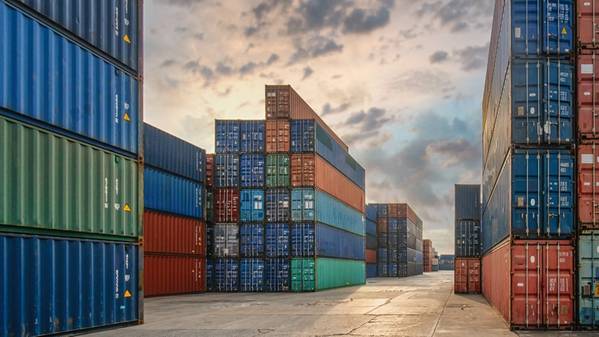
Criminal networks are misappropriating container reference codes to smuggle hundreds of tonnes of drugs and illegal goods into the EU, and Antwerp, Rotterdam and Hamburg are the ports most targeted for criminal infiltration.
That’s according to a newly released Europol report that looks into the risk and challenges for law enforcement posed by criminal networks in EU ports. The report was prepared in conjunction with the Security Steering Committee of the ports of Antwerp, Hamburg/Bremerhaven and Rotterdam.
The analysis states that the use of misappropriated container reference codes (or so-called PIN code fraud) is gaining traction among criminal networks as a modus operandi for extracting illicit goods from ports. Criminal networks arrange the infiltration of ports by coordinating local networks of corrupted port insiders.
The drug traffickers promote corrupt actions and practices sometimes by bribery, sometimes by intimidation. As a side effect of the criminal operations in ports and the rivalry it entails, violence often spills out of major transportation hubs onto the streets of surrounding cities, where competition for distribution takes place.
Europe’s three biggest ports, Antwerp, Rotterdam and Hamburg, are among the most-targeted by criminal infiltration. The main way criminals do this is through the corruption of shipping companies’ personnel, port workers, importers, transport companies, and representatives of national authorities, among other actors, whose actions are necessary to secure the entry of illegal shipments.
This approach requires corruption of a large number of accomplices, so organised criminals are seeking new modus operandi that require the corruption of far fewer individuals. The misappropriation of container reference codes only requires the corruption of one person, along with either the corruption or a Trojan horse style infiltration of extraction teams, who are then paid between 7 and 15% of the value of the illegal shipment.
The misappropriation of container reference codes is an example of how criminal networks continuously look for loopholes in port procedures and gaps in security. Criminals infiltrate the companies involved in the logistics process and procure the reference codes of the containers where their drugs are concealed, preferably without the knowledge of the lawful owner. The codes are given to the driver of a transport company working for the criminal network, who retrieves the containers from the port terminal while pretending to be the legitimate client. Outside the port, the drugs are extracted from the container. Often the containers are then left along the roadside or they disappear.
The report states that one of the most effective measures to close loopholes/gaps in the logistics process is the principle of access to data and data systems on a need-to-know basis. Logistics companies limiting access to container reference codes has already proven to be an effective solution. Other preventive measures to be taken by ports and port related actors include logging and traceability of database access to sensitive data, warning systems to detect irregularities, and increased checks of truck driver credentials at the terminals to strengthen container release procedures.
The report recommends that further enhancement to the international information exchange on the criminal networks’ activities in ports between Europol and EU Member States. Continuous attention must be paid to the integration of security features in the design of port infrastructure, and public-partnerships should be implemented tackle the infiltration of criminal networks in EU ports.
Europol’s Executive Director Catherine De Bolle said: “Criminal networks work closely to evade security at land borders and at air and maritime ports. They have one thing in mind – profit. An effective response is closer collaboration between the public and private sector; this will make both sides stronger.”
Maritime ports in the EU handle some 90 million containers each year, but authorities are only able to inspect between 2% and 10% of them. Meanwhile, it is estimated that in the last few years, at least 200 tonnes of cocaine have been trafficked trough the ports of Antwerp and Rotterdam alone.



